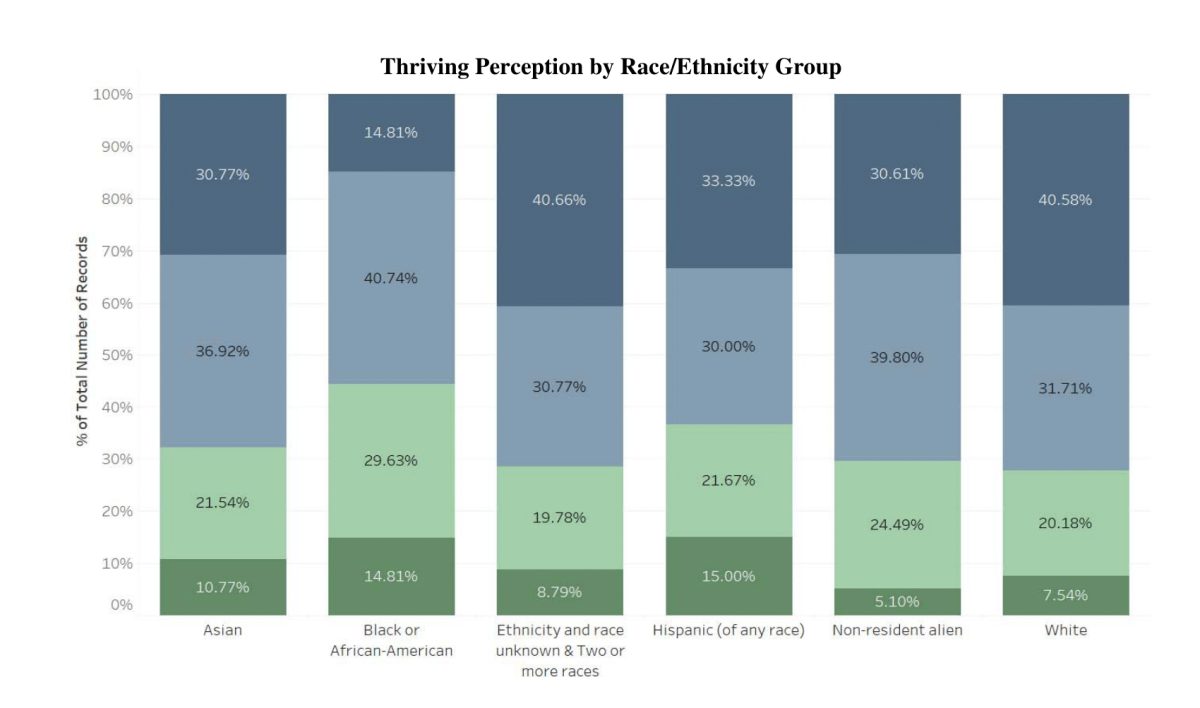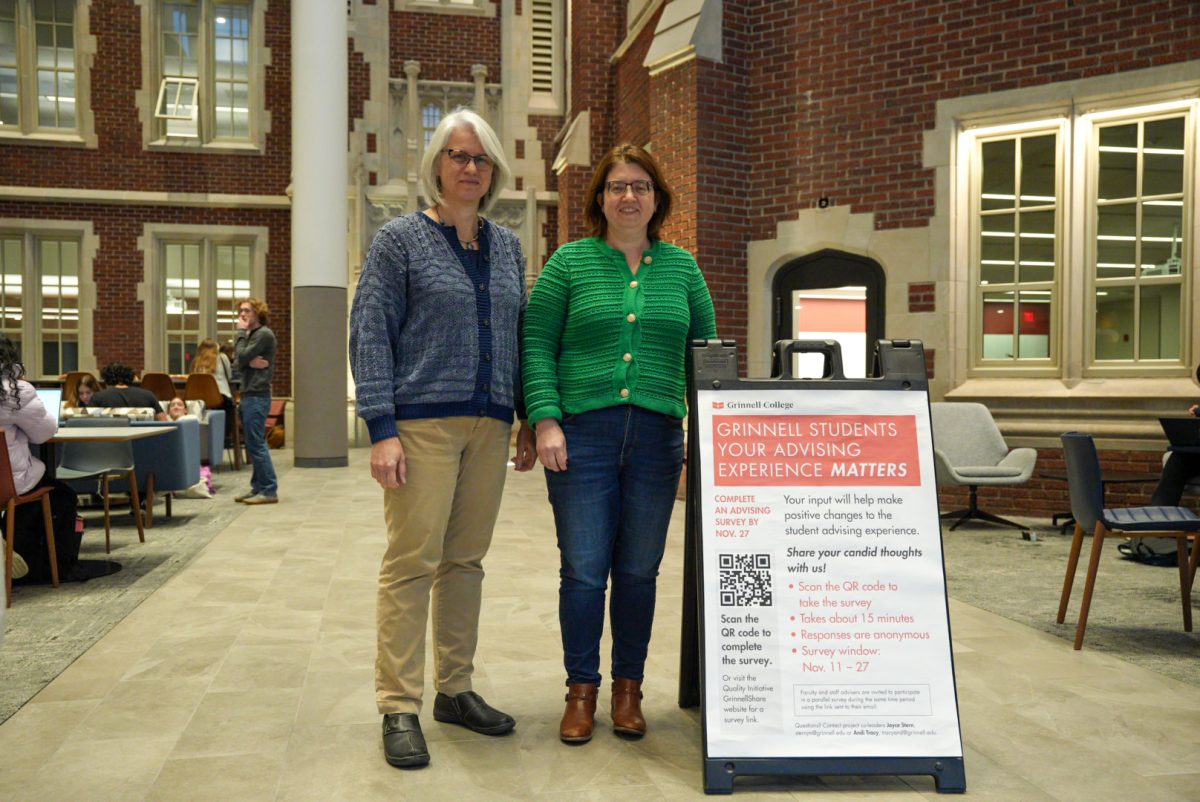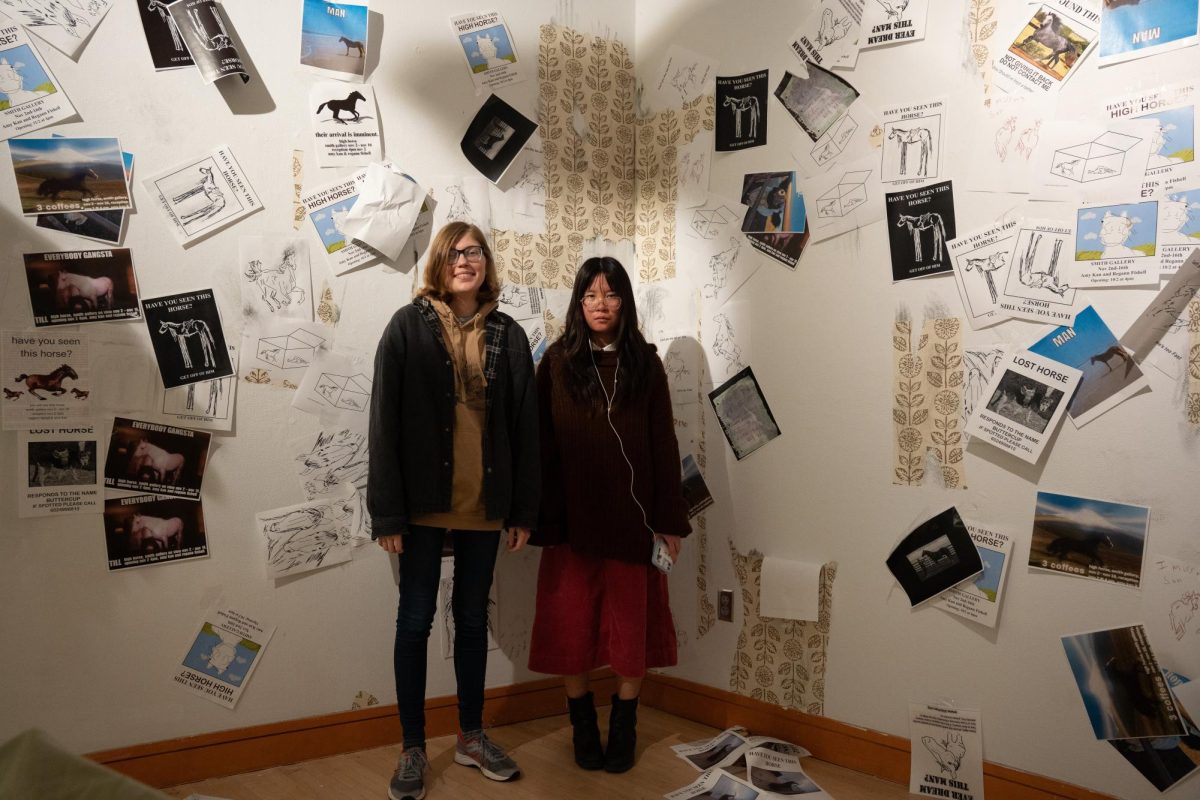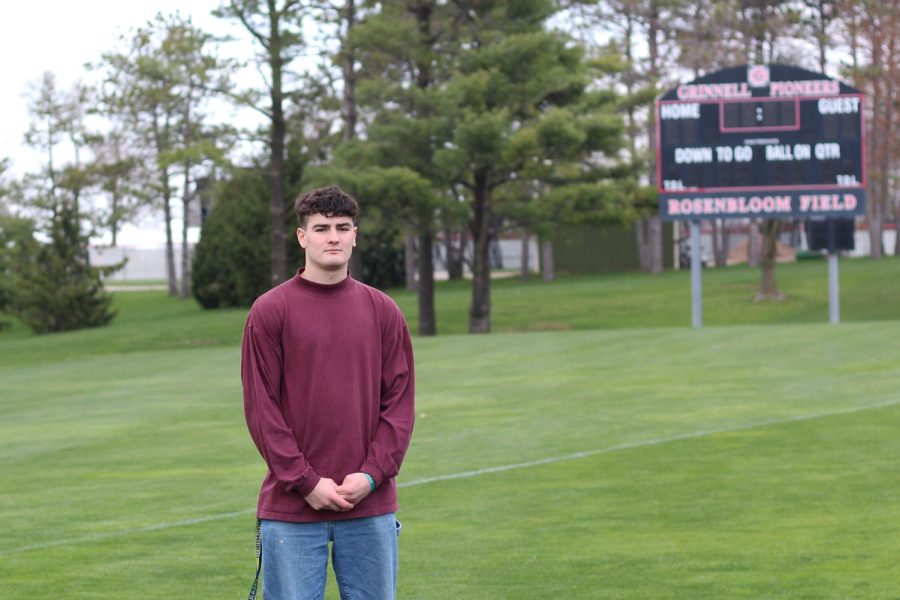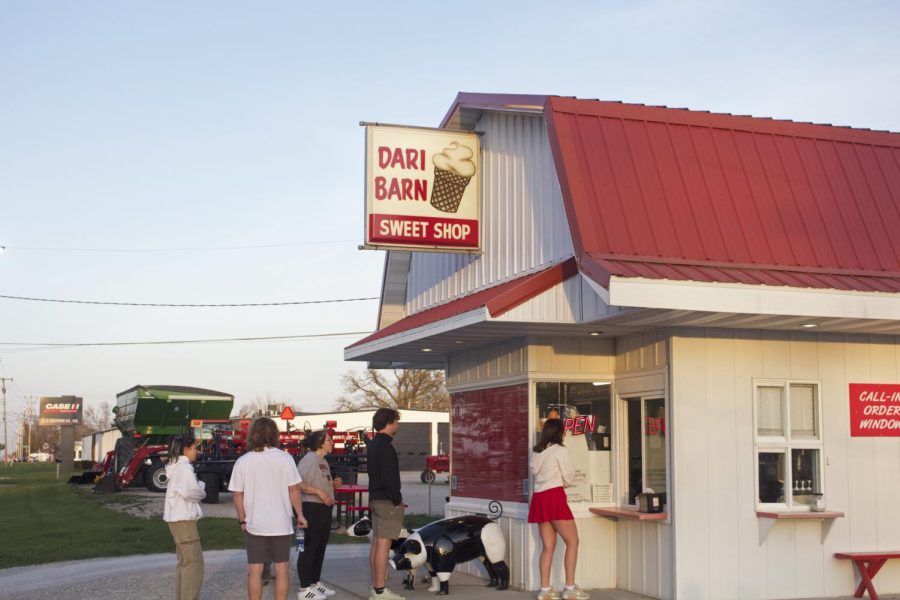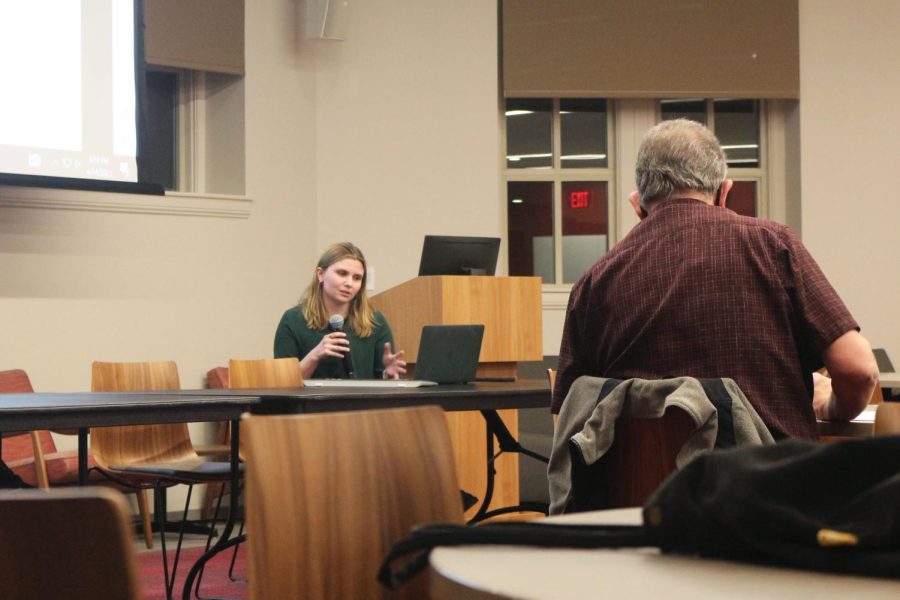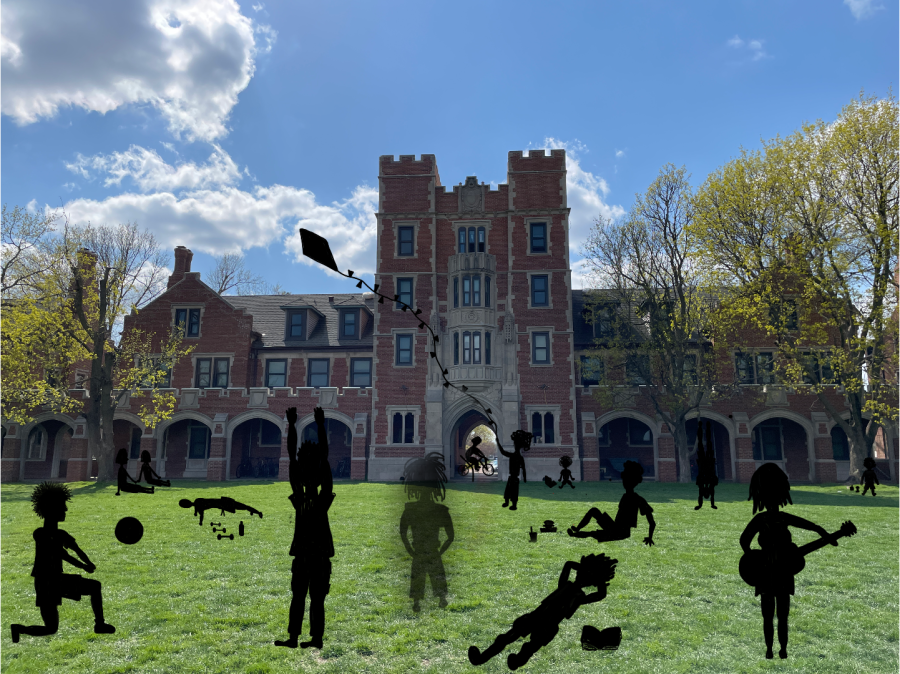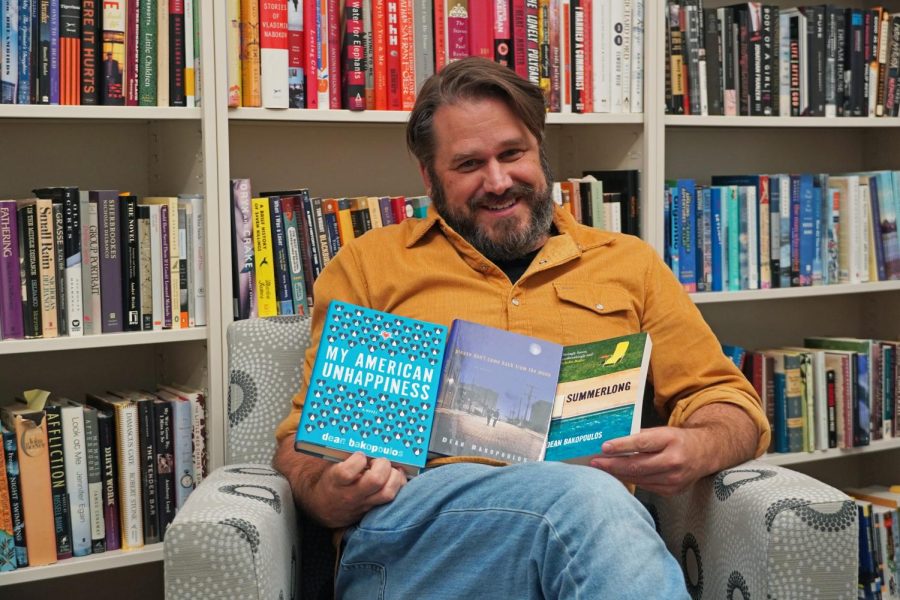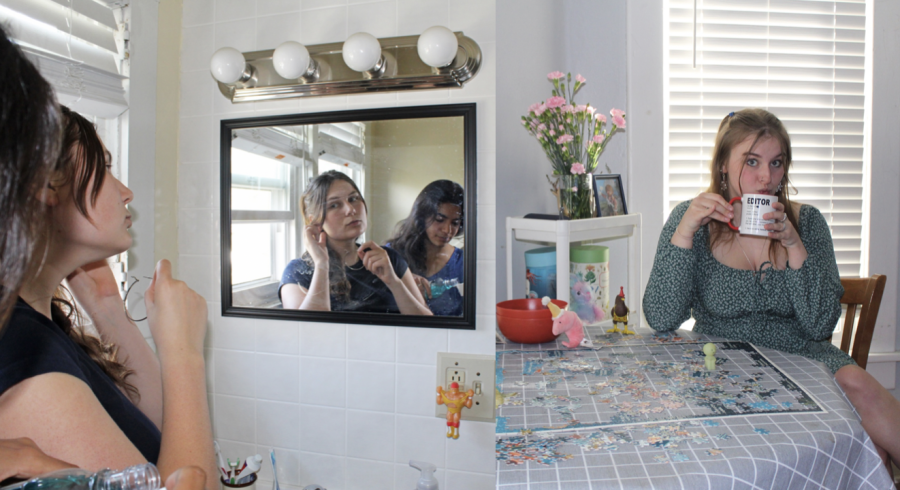The Harris Center erupted in cheers and screams on April 13 as the drag kings, queens and groups of Grinnell College performed at Spring 2019 drag show. The S&B’s Shabana Gupta [guptasha] captured the event on-camera and Arts Editor Zoe Fruchter ‘21 collected quotes from Drag Show participants and observers on the art of drag, and the role of Drag Show in Grinnell College culture.

“Drag means messing with gender expectations in some way, in behavior or appearance or both. Drag means finding something — empowerment or freedom or expression — via enacting a performance through this gender fuckery.
For me, doing drag this year was incredibly empowering. Making a man eat my banana dick while the crowd screamed was a huge highlight for me. Also, getting to incorporate the things I do as a sculptor, such as construction and welding, into my routine with the toolbelt, welding jacket and drill was great because it allowed me to tie together the traditionally masculine activities I take part in with my drag persona and my queerness. It was also so good to work with such brilliant and talented people (Judith [Tong ‘19], Esther [Hwang ‘20] and Nai’ya [Willis-Hogan ‘20]) collaboratively on our routine — everyone had such brilliant ideas and execution.
Drag is about being visible and being seen however you want to be in your body and your queerness; being looked at, cheered on, and adored in your sexuality, existence, and appearance.”
Charlotte Richardson-Deppe ‘19

“I thought this semester’s drag show was especially strong, given the variety of performances and a greater focus on drag. From a wonderful Desi-style choreographed number to death drops and artful lip-syncs, I was impressed by the effort of our students. And the last lip-sync kept us all at the very edge of our seats, with theatrics that [were] both sensational and confrontational. It was really superb.”
Professor Alfredo Rivera ‘06, art history

“I love drag, and I thought the spring show was the best I have been to in Grinnell. What I found really interesting was that even in this subversive space, where roles of gender and sexuality are interrogated and rewritten, albeit briefly, we often struggle to operate outside of the things we are trying to challenge. For instance, much of the show still revolved around the phallus. Consider the act about the female orgasm, which was lovely. The premise of it was that the female orgasm isn’t mythical, but we have to ask to whom is it mythical? Or the moment that shocked the audience the most was the chopping of the cucumber. That moment of symbolic destruction was still about the phallus. How do we construct subversive spaces, where sexuality and pleasure is not always conceived in relation to the sexual matrix of heterosexual masculinity?”
Farah Omer ’19

“For me, drag is all about subversion and escape. There’s something subversive about a man throwing on a dress, heels and a wig and prancing around onstage. There’s something equally subversive about enjoying it, about literally throwing your money at it, especially in today’s political climate. And for the length of the performance we all, performers and audience alike, get to escape from the rigid bounds of gender. In that moment, April Showers’ womanhood is just as real as anyone else’s.”
April Showers

“For me, drag is a lot about celebrating its origins as an art form that was pioneered by queer people of color, especially black and brown trans women. In a more universalizing sense though, it’s also about having the opportunity to explore the weird subversive parts of yourself and your gender presentation and invoking those parts through the visual and the physical. It’s about selling a fantasy. I think this year we were super lucky in that we had a real diverse group of performers as well as an incredibly diverse range of perspectives.”
Tucker Haddock ‘21


At the request of a student, their name was removed as one of the collaborators mentioned by Charlotte Richardson-Deppe.



















































